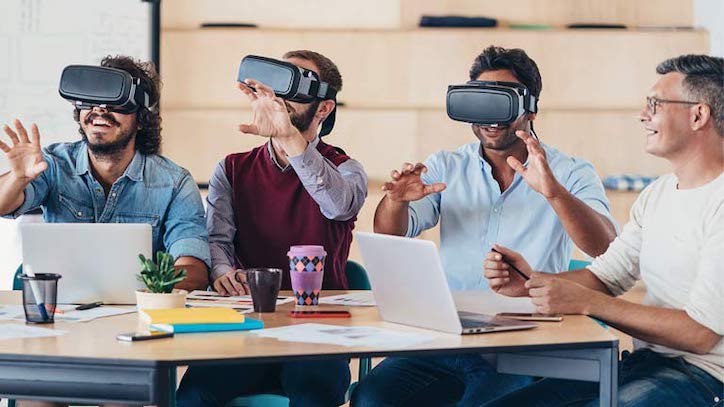Virtual Reality (VR) technology has opened up new realms of immersive experiences, transforming the way we play, travel, and learn. With VR, we can step into digital worlds and engage with interactive environments that provide a heightened sense of presence and engagement. This article delves into the exciting possibilities of VR across gaming, travel, and education, highlighting how this technology is reshaping these domains and offering unique and immersive experiences.

1. Gaming:
Virtual Reality gaming has revolutionized the way we interact with video games, transporting players into fully immersive digital environments. With VR headsets and controllers, gamers can physically move, interact, and explore virtual worlds. This technology provides a sense of presence and realism, enabling players to engage with games in a more immersive and intuitive manner. From action-packed adventures to puzzle-solving experiences, VR gaming delivers a level of immersion and excitement that traditional gaming cannot match.
2. Travel and Exploration:
Virtual Reality has the power to transport us to distant lands and immerse us in virtual travel experiences. With VR headsets, users can explore famous landmarks, natural wonders, and culturally significant sites from the comfort of their homes. Virtual travel experiences provide a sense of presence and enable users to navigate and interact with their virtual surroundings, delivering a taste of adventure and exploration without the need for physical travel. VR can also facilitate virtual tours, allowing users to visit museums, galleries, and historical sites with detailed visual and audio information.
3. Education and Training:
Virtual Reality has tremendous potential in the field of education, offering immersive and interactive learning experiences. VR can transport students to historical events, take them on virtual field trips to far-flung destinations, or provide hands-on simulations for scientific experiments or medical training. By placing learners in realistic virtual environments, VR enhances engagement and retention, making complex concepts more accessible and memorable. This technology fosters active learning, critical thinking, and problem-solving skills by allowing students to interact and manipulate virtual objects.
4. Virtual Social Experiences:
Virtual Reality has also paved the way for virtual social interactions and collaborations. With VR headsets and platforms, users can meet and communicate with others in shared virtual spaces. This enables social experiences such as virtual meetups, multiplayer gaming sessions, or virtual conferences. VR social experiences provide a sense of presence and embodiment, enhancing interpersonal connections and fostering a new form of digital interaction that transcends geographical boundaries.
5. Empathy and Perspective Building:
VR has the potential to evoke empathy and offer unique perspectives by placing users in the shoes of others. This can be particularly impactful in areas such as social justice, cultural understanding, and historical narratives. VR experiences can transport users to different time periods, diverse cultures, or challenging situations, fostering empathy, and promoting greater understanding and compassion.
Conclusion:
Virtual Reality technology is revolutionizing the way we engage with gaming, travel, and education. From immersive gaming experiences that transport players into virtual worlds to virtual travel that allows us to explore new destinations from the comfort of our homes, and educational applications that enhance learning and engagement, VR offers a new dimension of immersion and interactivity. As VR technology continues to evolve and become more accessible, the possibilities for virtual experiences are limitless. Whether it’s escaping into a digital realm, exploring new cultures, or delving into educational simulations, VR opens up exciting opportunities for entertainment, exploration, and learning.